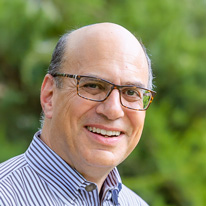
Reducing Physician Burnout With the Click of a Button
Automating home care admission paperwork with digital formats and auto signatures can reduce physician burnout.

By Reece Anderson, Account Executive, Docusign
Doctors and administrators like you have nearly 4 million opportunities each year to make your lives a little bit easier.
That’s about how many times physicians across the country admit patients to a home health agency or service, according to the latest available data from Trella Health, a healthcare analytics firm based in Atlanta.
As you know, every home care admission requires you to do paperwork. Automating that paperwork and enabling you to sign all those forms electronically could relieve some of the pressure on you that’s contributing to physician burnout.
In this blog post, we’re going to connect the dots between physician burnout and paperwork and show you how you can use e-signatures in the home care setting to eliminate a manual task that offers no clinical value to your patients or business value to your practice.
More than 4 in 10 doctors are burned out
Researchers from the Mayo Clinic have been studying physician burnout for years. In their latest study published last September in the monthly journal Mayo Clinical Proceedings, they along with researchers from Stanford University and the American Medical Association found that about 44 percent of physicians experienced symptoms of burnout in 2017. Those symptoms included emotional exhaustion and depersonalization.
Further, more than 40 percent of the 5,445 physicians surveyed for the latest study, said they “disagree” or “strongly disagree” that their work schedule leaves them enough time for their personal or family life.
Paperwork is the leading cause of burnout
So what’s causing so many doctors to feel burned out? Medscape, the news, information and education branch of WebMD, asked more than 15,000 doctors that same question earlier this year. Their answer? Paperwork.
Fifty-five percent of the surveyed physicians cited “too many bureaucratic tasks” such as charting and paperwork as the No. 1 contributor to their burnout. A distant albeit related second was “spending too many hours at work,” cited by 33 percent of the respondents.
You can reverse burnout and its costs
Paperwork and the accompanying burnout that it creates are costing physicians more than just mental fatigue and feelings of helplessness. It’s also costing physicians money.
A study published last June in the journal Annals of Internal Medicine pegged the cost of burnout-related physician turnover and reduced clinical hours in the U.S. at $4.6 billion a year. The cost to the healthcare delivery system is $7,600 per employed physicians, the study said.
But, all is not lost, according to the study’s researchers.
“Together with previous evidence that burnout can effectively be reduced with moderate levels of investment, these findings suggest substantial economic value for policy and organizational expenditures for burnout reduction programs for physicians,” they said.
In-other-words, investing in things that can help reduce physician burnout will pay big dividends.
Using tech to improve clinical workflows
What sort of things? An AMA survey of nearly 1,400 doctors offered a strong clue. Forty-seven percent said they used digital health tools in 2019 at the point of care to improve workflows, according to the survey results, which the AMA released in February. Another 16 percent of the physicians said they plan to start using such workflow tools soon.
The No. 1 reason to use them? Efficiency, cited by 82 percent of the doctors.
The AMA defined the digital health tools as technologies that enhance “communication and sharing of electronic clinical data to consult with specialists, make referrals and/or transitions of care.” Transitions of care like the discharge of your patients from the hospital to home care.
Interoperability among EHRs and the signature process is another way to improve clinical workflows through technology. Many providers either do not have EHR or lack the capability to receive information from the providers who would like to electronically send patient health information to them. Others find it more challenging sending and receiving data across different vendor platforms, and matching the correct patient between systems. By having connectors and integrations between the EHR and the eSignature process can alleviate these problems.
Making the case for automated and interoperable eSignature tech
It’s clear from the published research that physician burnout is real, paperwork is a leading cause and, by automating that paperwork, you can improve the quality of a physician’s work life, which is one of the four parts of the Quadruple Aim.
That brings us back to those nearly 4 million home care admissions you and your peers make every year. Every time you make a home-care admission, you have to physically sign in ink a number of paper forms, including but not limited to:
Admission form
Authorization to treat form
Care plan instructions
Durable medical equipment agreements
Medication reconciliation form
New patient form
Patient onboarding form
Patient referral form
Prescription form
Prior authorization form
It’s inefficient. It’s time-consuming. It’s error-prone. And it’s all contributing to those feelings of burnout you may be experiencing.
There is a better way, and that’s automating the signing of digital versions of the same forms when you admit one of your patients to a home-care agency or service. Then these digital forms can directly integrate into the EHR. It’s efficient. It’s timely. It’s error-free. And most of all, it’s one less thing that makes you frustrated because you’re spending time on paper, not with patients.
Your patients also benefit from your affiliated home-care providers being able to admit and initiate care sooner because there are fewer paperwork delays.
Talk to your home-care providers today. Tell them you want to go paperless and that you want to start signing their forms with a click of a button. Let’s start reducing your feelings of burnout now.
_____________________________________________________________________________________
Reece Anderson is an account executive with Docusign’s healthcare and life sciences business unit.
Related: Learn more about Docusign eSignature for home health care.
Related posts
Discover what's new with Docusign IAM or start with eSignature for free



